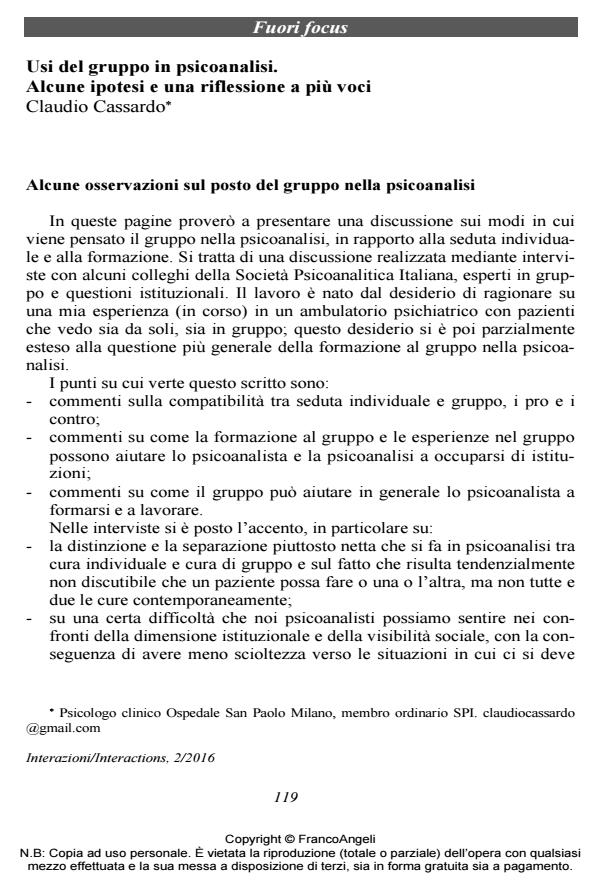Uses of the group: hypotheses and plural-voice thinking
Journal title INTERAZIONI
Author/s Claudio Cassardo
Publishing Year 2016 Issue 2016/2
Language Italian Pages 14 P. 119-132 File size 156 KB
DOI 10.3280/INT2016-002011
DOI is like a bar code for intellectual property: to have more infomation
click here
Below, you can see the article first page
If you want to buy this article in PDF format, you can do it, following the instructions to buy download credits

FrancoAngeli is member of Publishers International Linking Association, Inc (PILA), a not-for-profit association which run the CrossRef service enabling links to and from online scholarly content.
The essay will cover the following themes:
the compatibility between the group and individual therapy;
how can the group help the psychoanalyst and psychoanalysis in general to deal with public and institutional problems;
- how can the group therapy help in the formation of the psychoanalyst.
Author tried to confront with these issues by interviewing himself and others about some of the typical attitudes of our community, in particular I decided to focus my attention on:
the net psychoanalytic distinction between group and individual therapy; the dogma that a patient cannot be involved in them both at the same moment;
the typical psychoanalytic indifference in developing more consciousness of and competence on the public dimension. Indifference that eventually results in our essential absence from institutional and social issues, where however our contribution as psychoanalysts would be very important;
- the incapacity of psychoanalysis in questioning the classical candidate-formation process.
The incapacity of believing and accepting that candidates, but also associates, ordinaries and teachers may have an extraordinary opportunity in taking part to groups dedicated to study the group therapy itself, which would also illustrate to psychoanalysts themselves how they behave within a group.
Keywords: The compatibility between the group therapy and individual therapy; competence on the group dimension; competence on the institutional dimension; group formation; group thinking
Claudio Cassardo, Usi del gruppo in psicoanalisi. Alcune ipotesi e una riflessione a più voci in "INTERAZIONI" 2/2016, pp 119-132, DOI: 10.3280/INT2016-002011